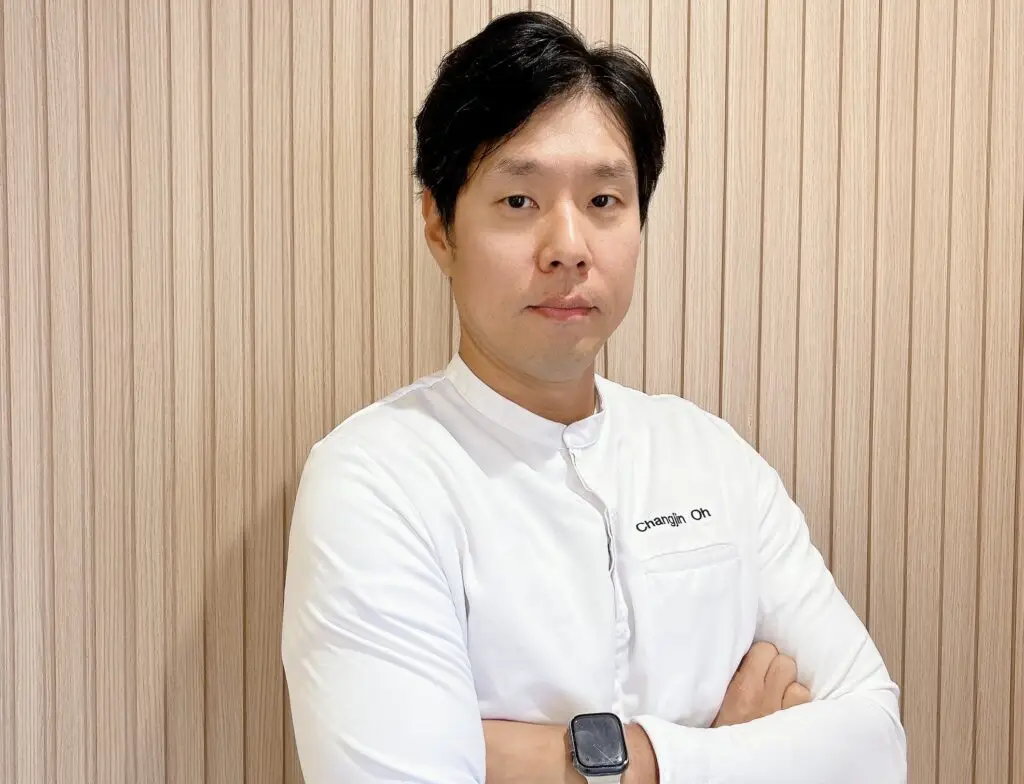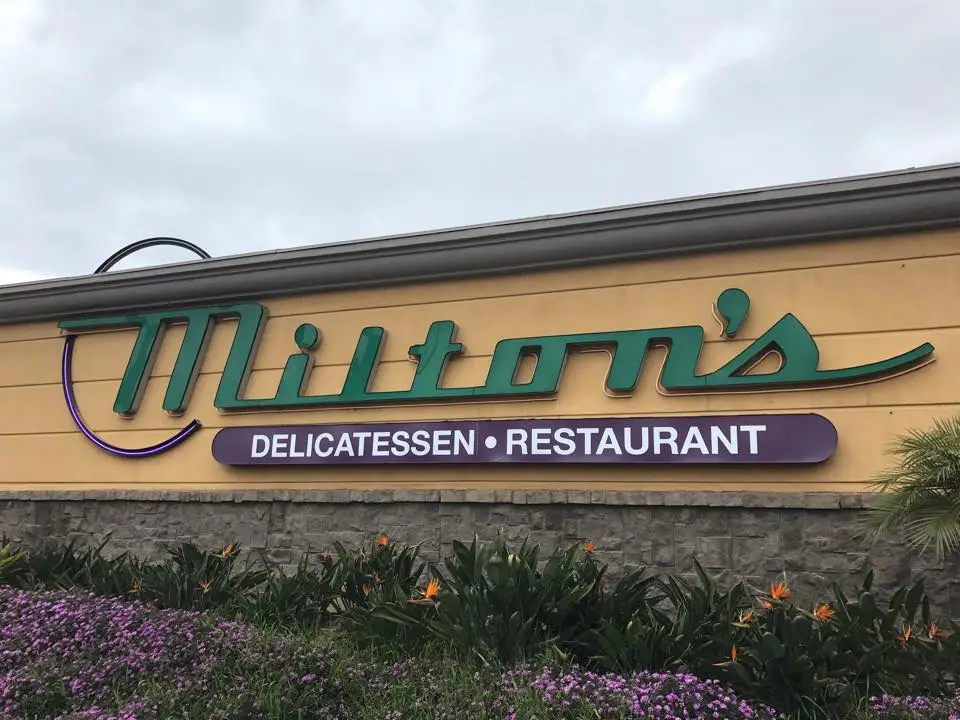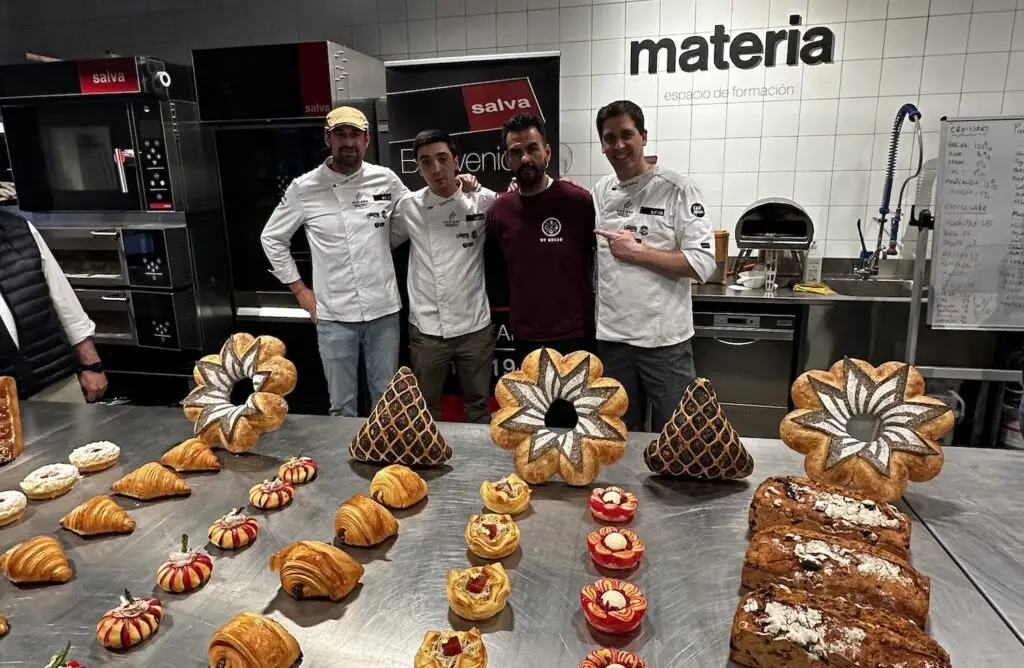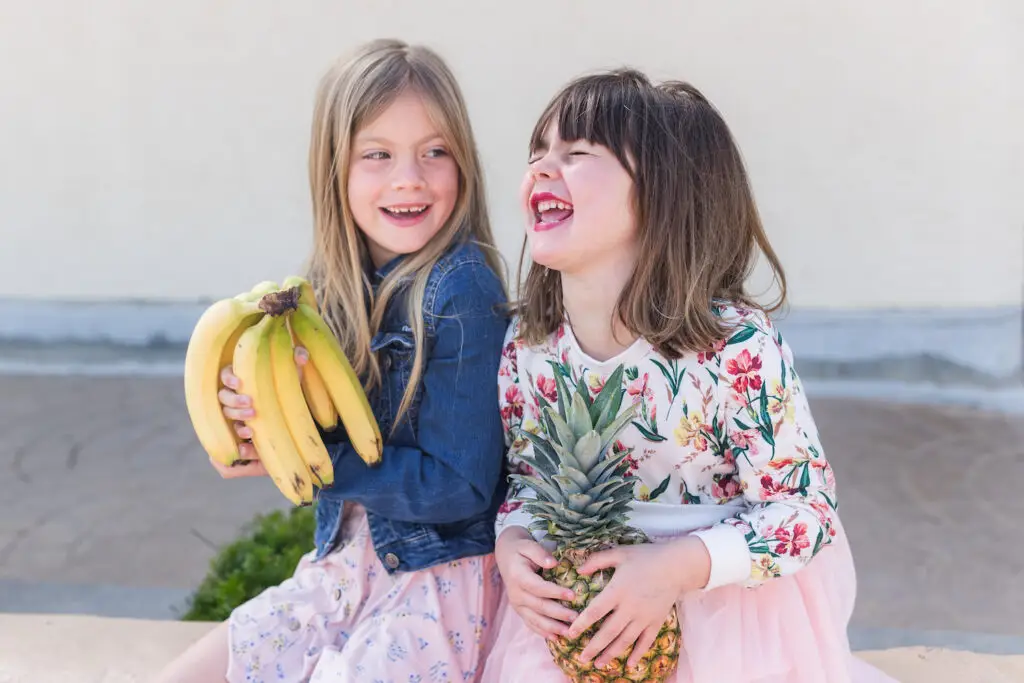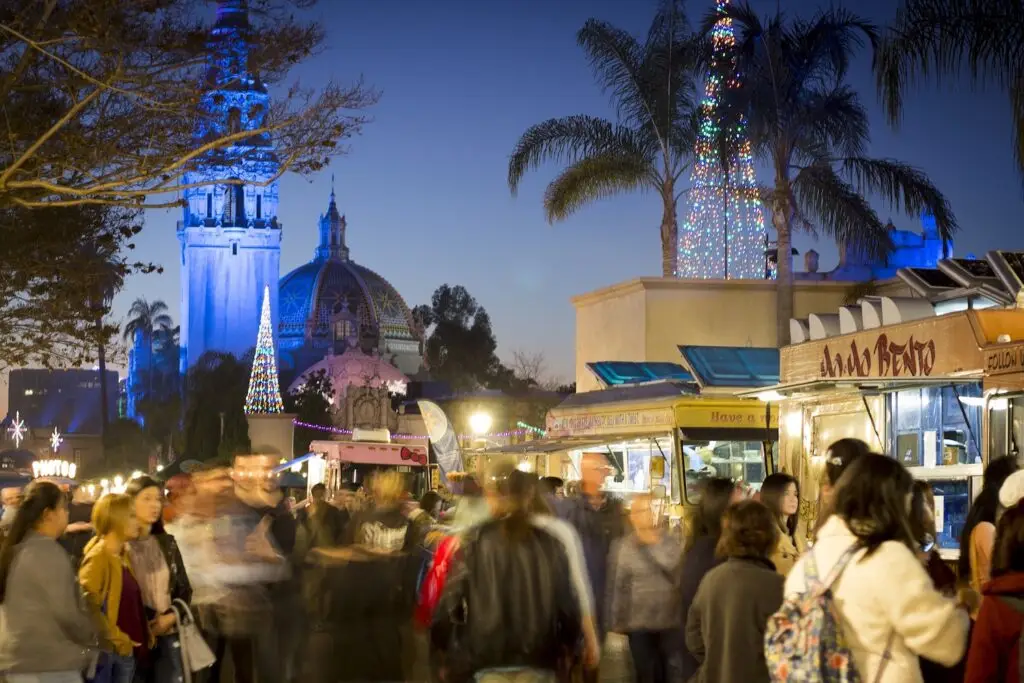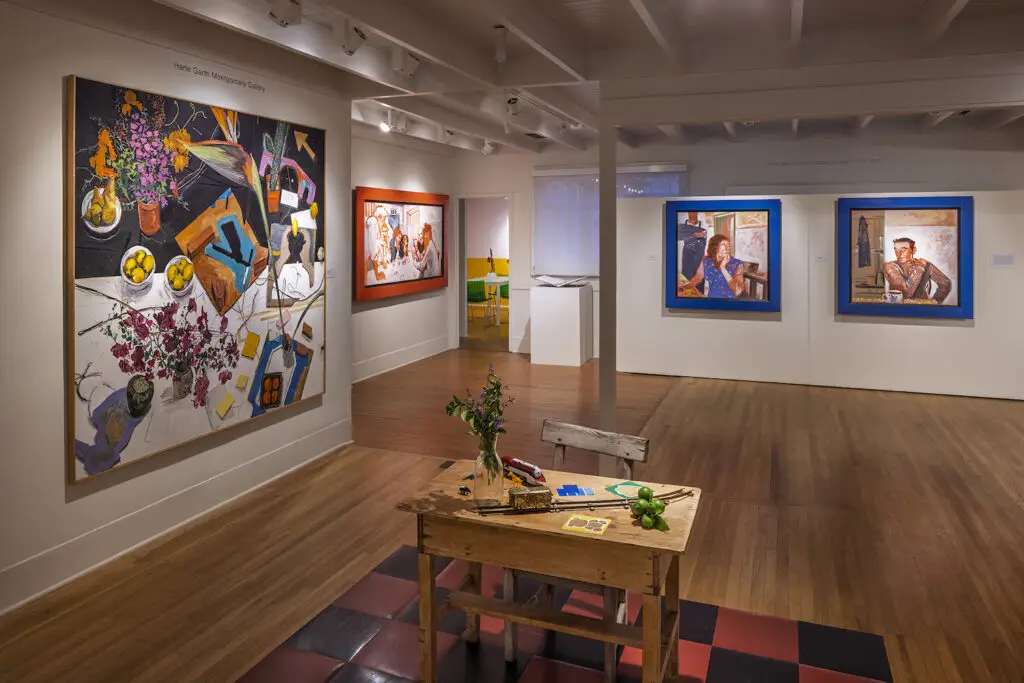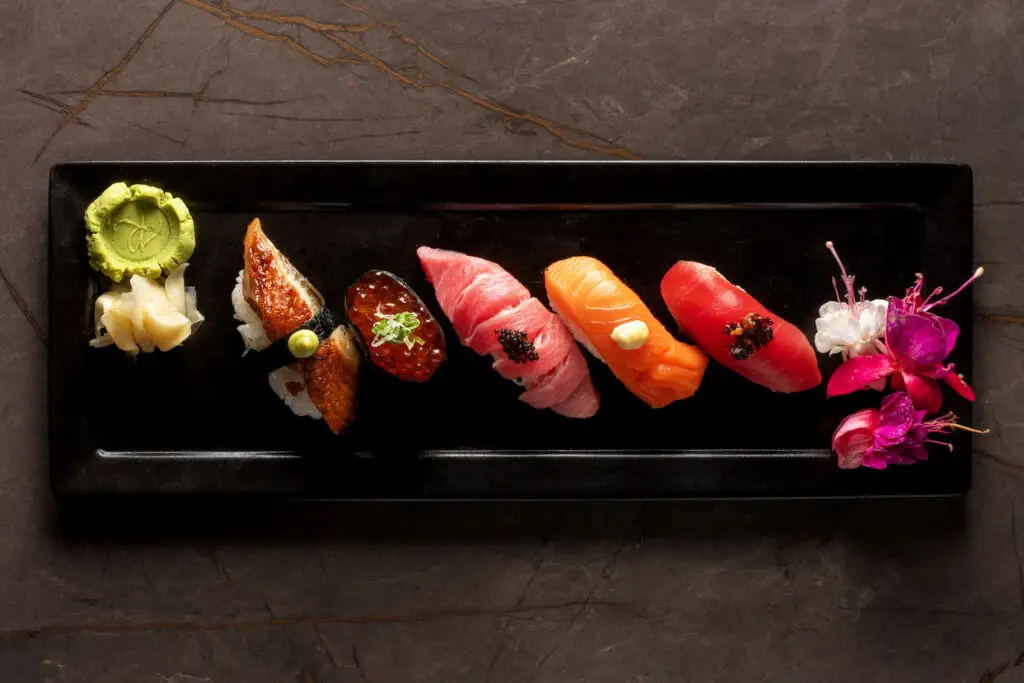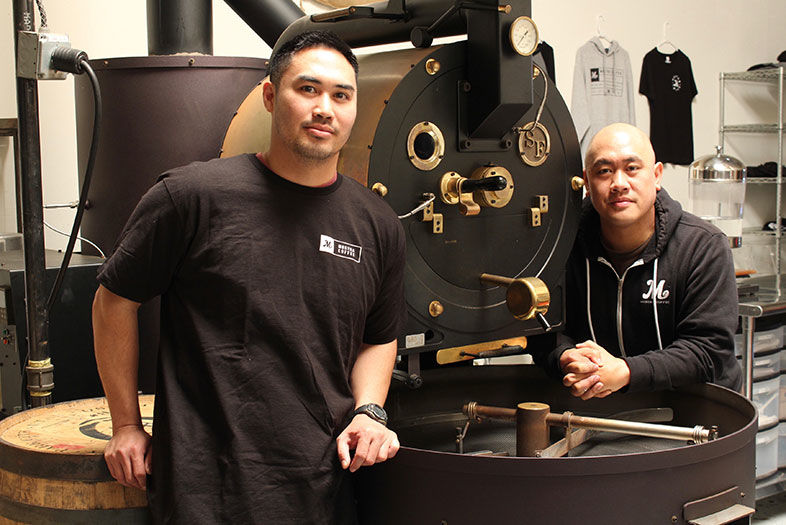I think the first real coffee beer I fell in love with was AleSmith’s Speedway Stout. I might have had a coffee stout or porter before that, but it doesn’t stick in my memory. Speedway Stout, like Karl Strauss’s Wreck Alley, Stone’s Xocoveza, and Ballast Point’s Victory at Sea, were all milestone coffee beers for me in one way or another—they each created a uniquely delicious harmony between the beer and the coffee, and they each elevated their basic ingredients to a new level by combining them in just the right balance. Since then, I’ve had similar epiphanies with coffee blondes, coffee reds, and coffee IPAs. Done properly, it seems there’s almost no beer that can’t be enhanced by the right kind (and amount) of coffee.
Nobody knows the inherent potential of coffee and beer better than the folks at Mostra Coffee in Carmel Mountain Ranch. Four years ago, they started roasting in a garage for community events, but soon realized their passion could become a full-fledged business. They’ve only been roasting full time for a relatively short period, but they’ve already been part of about 100 beer collabs with brewers and breweries from all over the country—even the world.
Of course, lots of our local brewers have taken notice of the beers Mostra has helped to create, so demand from San Diego brewers alone keep these guys roasting at full speed. I sat down with Mike Arquines, co-founder, head roaster, and one of Mostra’s five principals (the others are Beverly and Sam Magtanong, RJ Ocubillo, and Jelynn Malone) to talk about how Mostra works to develop beers with brewers, why coffee is such a popular adjunct, and what the next year looks like for his company. RJ Ocubillo joined us toward the end…
You guys are deep into the beer collaboration concept—did you say that Mostra has done more beer collaborations than any other coffee company in the world?
Yeah. As of now, I would say that’s true, for sure.
Mostly California companies?
Local, for sure. San Diego and Orange County. But we’ve also gone to Florida. To Virginia. To Portland. We’ve even gone all the way to Copenhagen and Bangkok.
If you had to guess, how many collaborations would you say you’ve done?
Oh, man. I’d say almost a hundred. That’s a good amount, for only being four years old. We’re not “collaboration focused,” necessarily, but our beans do really well with beer.
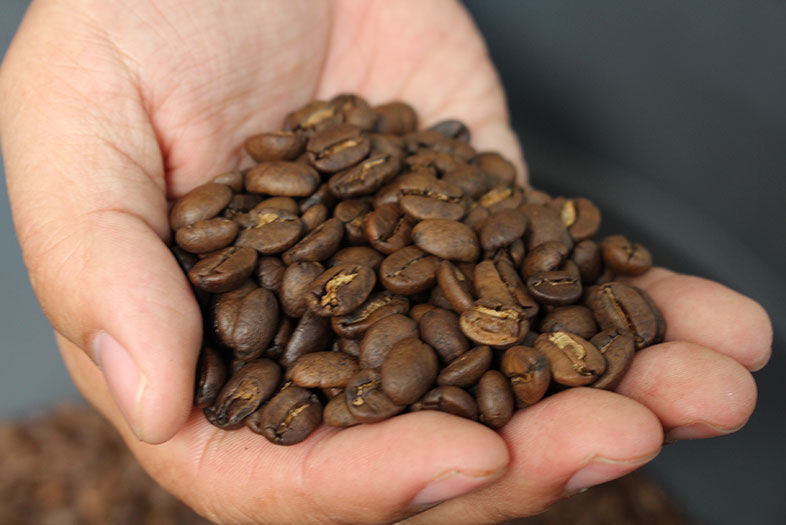
Have a (Coffee) Beer with Mostra’s Mike Arquines and RJ Ocubillo
Mostra custom roasts beans for brewers to use in their beers. | Photo: Bruce Glassman
Tell me about that. What is it about the beans or your roasting technique that makes your coffee so compatible?
First of all, it’s selection. Then it’s also knowledge—knowing what happens during the brew process and how flavors are effective, in terms of extraction. I always try to take every collaboration and custom-tailor the bean to the beer like a suit. That’s because every beer is different. Every brewer has his or her own style.
Do you normally taste the beer that the coffee is going to be in before you do the coffee?
We try to. We like to taste the base beer. I don’t even talk coffee until we know more about the beer. So that’s the service we provide, and what sets us apart. It’s a little more attention to detail, in terms of knowing the brewer, knowing the nuances of their beer and the style they are doing—what they want it to taste like, maybe a month from now, or maybe six months from now if it’s barrel-aged. So we need to know those things first and, from there, we can start talking flavor profiles and what type of coffee we want to use.
What’s an example of a kind of beer that required a specific kind of process?
Well, I’ll always ask the brewer how he or she wants the coffee to come through. Do you want it to complement the beer and meld really well with the beer or do you want it to be kind of the opposite? So, for a big stout, which is very viscous and chocolately and molasses, a lot of brewers tend to like the addition of a big roast character as well as the chocolate notes that some of the coffees provide, like in our Brazil beans. Those beans are not overly complex, but they do well in beer—especially stouts—because of their chocolate and brown sugar flavors. At the opposite end of the spectrum—like for an IPA—we’ll usually go for a fruitier, more natural process; something with a big citrus quality and higher acidity. That really tends to shine in an IPA.
Do you ever just do a crude base blend, like just pour some coffee into a base beer to see what it tastes like?
Absolutely. We’ll do that, but I’ll know that’s not really a true reflection of what the final product is going to be; it does give us a good idea of where to start, though. Like I could see if the beer is really overpowering the coffee, even in higher ratios, which will tell me that I’ll have to roast it a certain way to bring it out in the final product.
In some ways, you kind of treat the beans like hops, right? They’re similar in many ways.
Very much. Some hops are used for finishing, and our coffee is usually used for the end process as well. I like to know the type of hops a brewer is using, especially in a lighter beer like an IPA or a pale or something that can do well with a lighter roast coffee. That way I can work with both the hop profile and the coffee profile at the same time.
You came to this whole business from a culinary background, right?
Correct.
Sounds to me like you approach the whole thing very much as a chef would; considering flavor profiles and balance. You must feel your culinary training was an important part of what you’re doing now.
Absolutely. I always try to relate whatever I’m doing—whether it’s roasting coffee or making products like cold brew or a new profile of bean—I always relate it to the kitchen. For example, roasting a coffee is pretty much like roasting a chicken. You’re going through the same process of caramelization until it gets to certain point. Some people like it browner and some people like it more golden.
You’ve worked with a lot of brewers, and worked closely with them. What would you say is the best things about working with brewers?
Every brewer has his or her own personality and different style. It’s like a chef—they all have their own ways of doing things. One chef will make stock one way, another chef will do it a different way. It’s the same with brewers: One person will make an IPA one way, and another brewer will do it a different way. I love working with brewers for the creativity aspect behind the beer. At Mostra, we don’t brew beer, but to be involved in the process—knowing how certain things that happen during the brew process affect the final outcome, and how we can contribute to that in a positive way—I think that’s the most exciting thing. It’s also exciting, at the end of it all, when we get to see people drink it and really enjoy it.
What are some of the most memorable collaborations you’ve done?
Well, the Karl Strauss one always sticks out for me, since it was our first. In 2013, we did a collaboration with Wreck Alley. Derek [Gallanosa of Abnormal] worked at Karl Strauss at the time and he got us in to do a special cask night where all the Karl Strauss locations were going to tap a Mostra espresso cask of Wreck Alley. That was truly our first big one.
My most memorable one, which I’ll always tell people when they ask— is probably the first AleSmith collaboration. It was the Speedway we did with Jamaican Blue Mountain. It was great. Bill Batten was there at the time. He gave us that opportunity. We talked about it and we ran with it and it turned out to be a beautiful product.
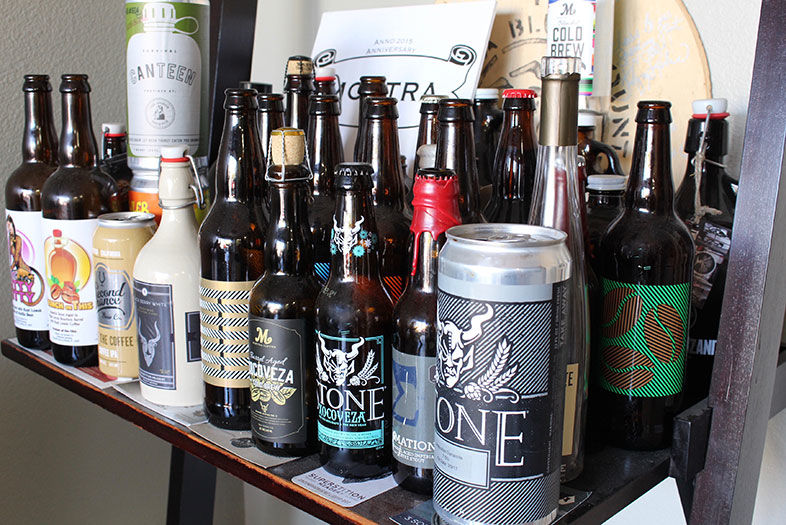
Have a (Coffee) Beer with Mostra’s Mike Arquines and RJ Ocubillo
Some of Mostra’s many beer collaborations are on display at their roasting facility in Carmel Mountain Ranch. | Photo: Bruce Glassman
I’ll also never forget that, at the time, we had to roast all 190 pounds of that coffee on a one-pound roaster! One pound at a time! That was almost 60 hours of roasting! But it was a labor of love, with blood, sweat, and tears. And then we had to cold brew it, and then we put it in kegs before they took it to AleSmith. It was a lot of time, and also a lot of anxiety because it was with AleSmith, which was Ratebeer’s number one brewery in the world at that time. And it was Speedway Stout! That beer was my introduction—my “gateway beer”—for coffee stouts. And that’s still the benchmark, in my opinion, for coffee stouts. People loved it, and it sold out pretty fast. That opened the doors for other opportunities and to work with other breweries.
Some of the beers you’ve worked on have sold for some crazy amounts of money.
Well, with beer—like a lot of other things—there’s a secondary market to it. And there’s a whole supply and demand thing, depending on how many bottles are released. We’ve been a part of a lot of high-demand beers, but the bottom line is the product has to taste good. Ultimately, to us, it doesn’t matter how much a bottle sells for on the secondary market, it has to taste good.
Most recently, we did a beer with J. Wakefield out of Miami, Florida. We did a 300-bottle release and we did a couple of one-offs from a single brandy barrel that people are selling from $500 for 750ml and up to $3,500 for a magnum. The collaboration we did with Abnormal, the M3, that sold out in three seconds. And that was 1,000 bottles. We watched it live—we thought the server had crashed.
[RJ Ocubillo joins us at this point]
Are there any beers that have really blown your mind in terms of how they came out? The final flavors or the unexpected things that happened in the bottle?
Mike: The bourbon barrel-aged Summation from 3 Sons out in Florida comes to mind. I also enjoyed Velvet Speedway a lot. Red Eye November [Imperial Coffee Stout] from Bottle Logic in Anaheim is another one. Fantastic beer. Those blew my mind for sure. And we also do mead, as well.
RJ: One of them won the Mazer Cup. The meadery is Superstition out of Prescott, Arizona. And the mead is Amante, which is cinnamon-chile mead, I believe, with coffee added. That won the Mazer Cup in 2016!
Mike: It also made it onto the Top 25 Liquids of 2016 from Draft Magazine. And that’s huge, because there’s so much good stuff out there, so many coffee products. And it was really special—not just the award—but also because we’re great friends with Superstition Meadery. We consider them almost like family, and they’re the number-one meadery in the world for us. Mead isn’t something you would think would have coffee, right?
Yeah, but a few years ago I would have said that IPA was something I wouldn’t think would have coffee in it.
RJ: Exactly. That’s right. Now Second Chance is doing it—they’re using one of our coffees in one of their IPAs and it’s really taking off.
What are some of the cool new collabs you’ve got in the works right now?
Mike: Well, there’s a wine-barrel-aged saison we’re doing that’s going to have coffee in it. That one’s exciting.
RJ: And there’s one we’re doing with Stone and Abnormal.
Mike: Right. The Neopolitan. It’s from the homebrewing competition they do. Paul Bisheri and his buddy Patrick Martinez, they won, and the winner gets to brew on a large scale. Just last Friday we did a big batch of it. It’s strawberries and chocolate and coffee and vanilla. So that’s exciting. And it’s going to get the same level of distribution that Xocoveza did, which is from here to New York. There are a bunch of other projects, but I can’t really talk about them because they haven’t been announced yet.
You’ve done a lot of coffee beers, how about a beer-flavored coffee?
Mike: We’ve actually done that! We’ve released a couple of barrel-aged cold brews. We did a Xocoveza barrel-aged cold brew. And we also finished it with the same adjuncts that were in the beer. When we were done, we had a beer-flavored coffee with wood character. We’ve also done a coffee bourbon with San Diego Distillery and then we did a barrel-aged coffee with that barrel.
You guys are pretty much always doing some collaboration at this point, is that right?
Mike: Yeah. And we get approached about it a lot. It’s always humbling and it’s always exciting for us. And it doesn’t matter if you’re a homebrewer just looking to make a small batch or if you’re Stone; we’re always excited to be part of making a great beer!
Endnote: In May, Mostra is opening a retail location in Carmel Mountain Ranch, which will be located between the See’s Candy store and Grub restaurant. Mostra cold brew is also available at limited retail outlets, including Brothers Provisions and Barons Market in North Park.
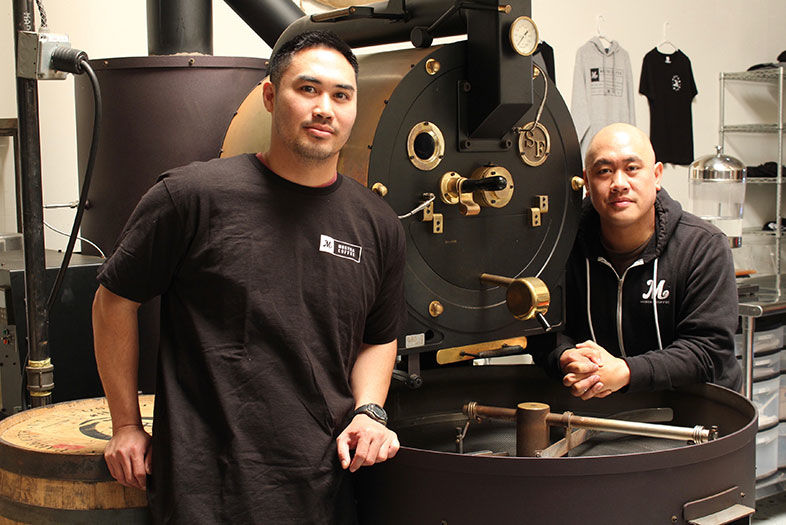
Have a (Coffee) Beer with Mostra’s Mike Arquines and RJ Ocubillo
PARTNER CONTENT
RJ Ocubillo (left) and Mike Arquines of Mostra Coffee | Photo: Bruce Glassman
